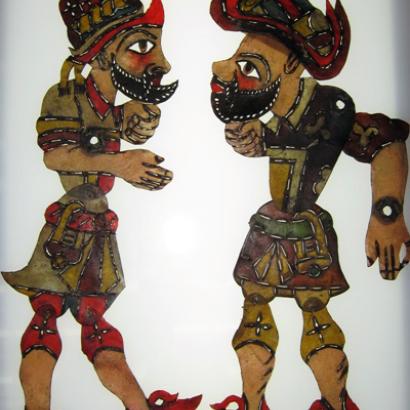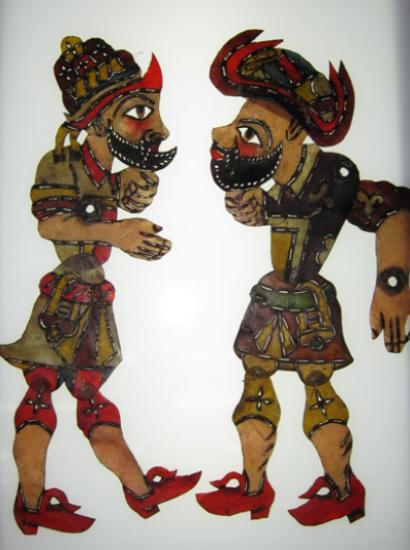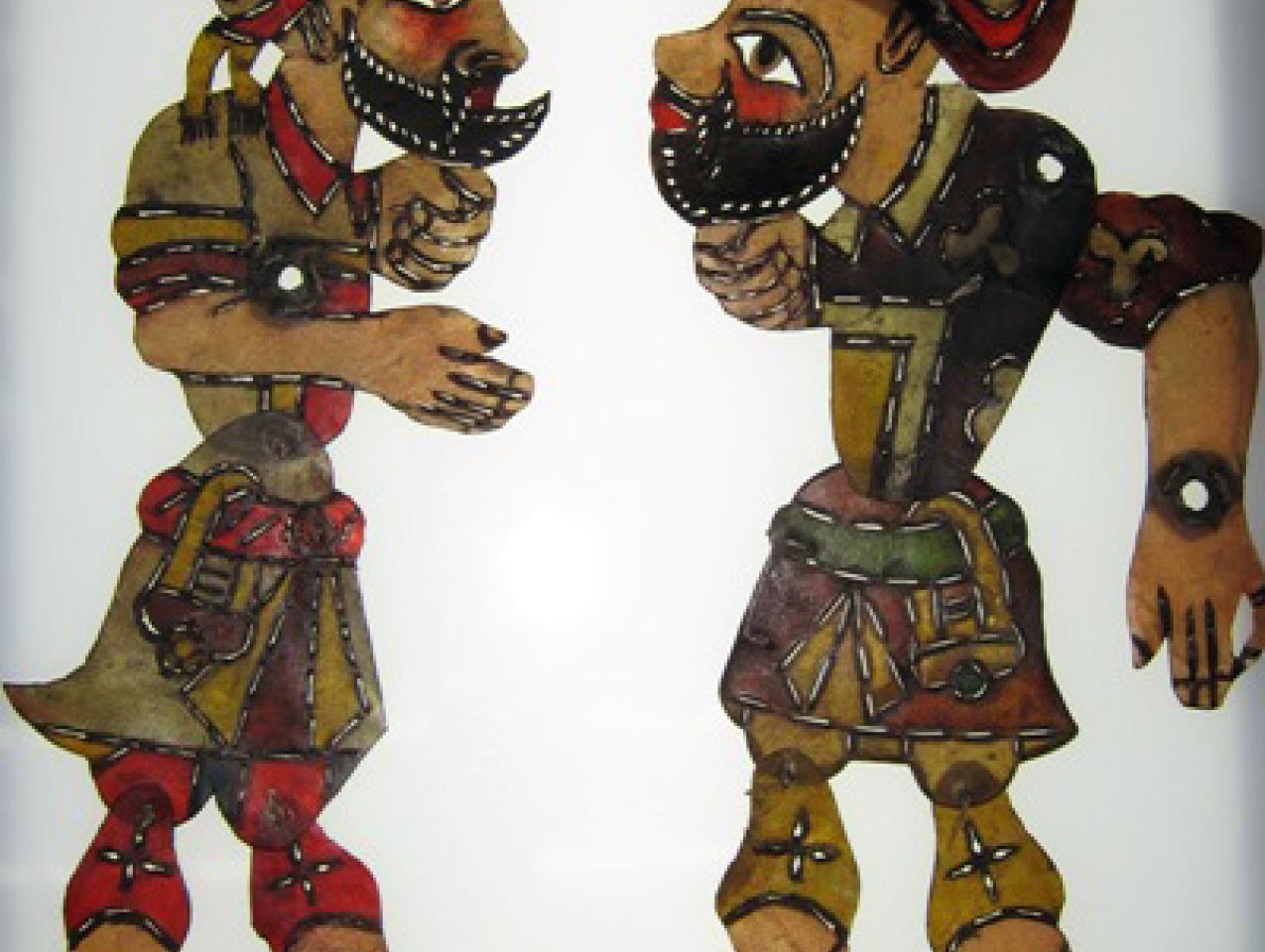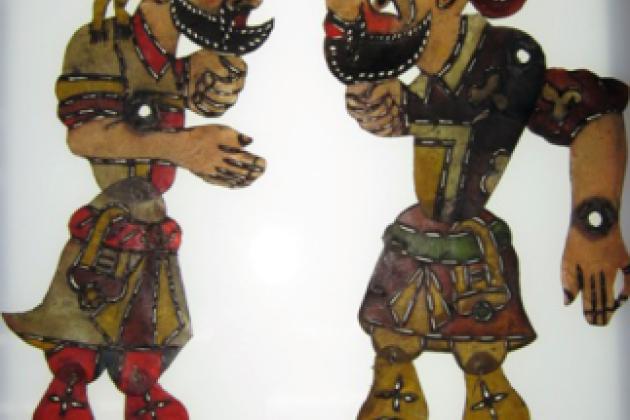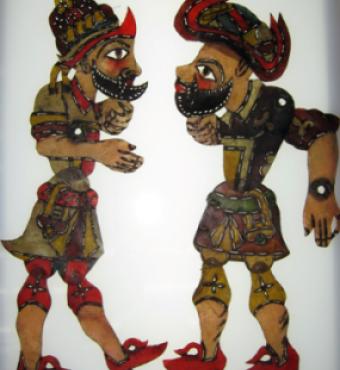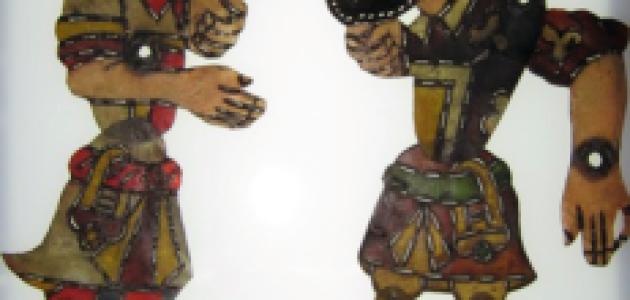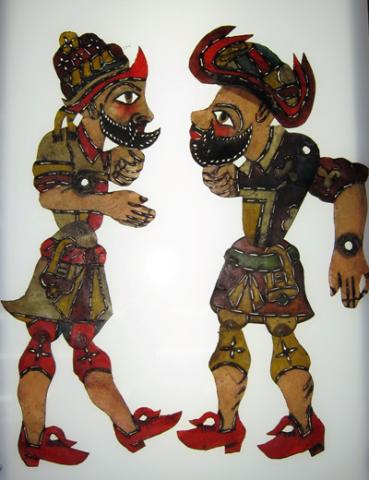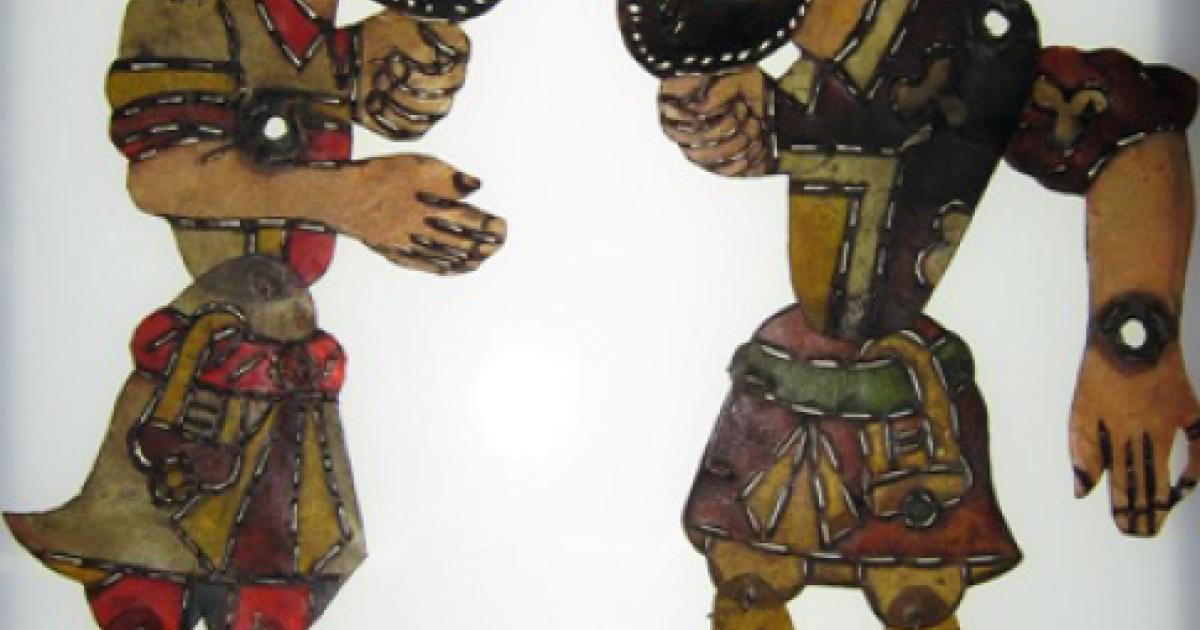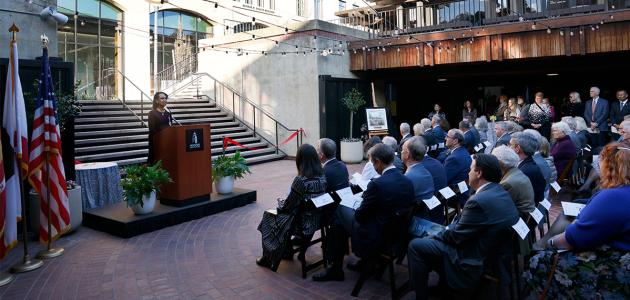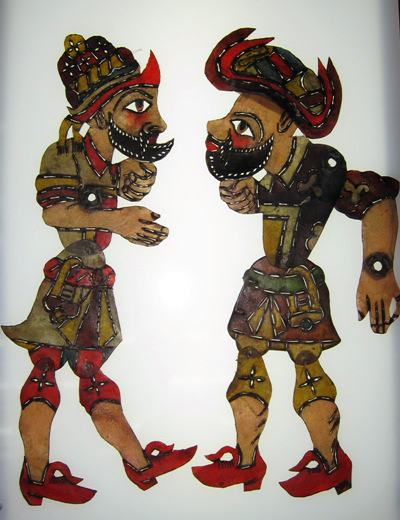
Being that the majority of our collections at the archives consist of paper documents, you can imagine our surprise when we found a handful of Turkish shadow puppets interfiled in the pages of a magazine in the Eleanor Bisbee papers. These shadow puppets, traditionally made from camel or ox hide, have a rich and vibrant history that began in the sixteenth century.
Turkish shadow puppet plays were typically performed in gardens, coffeehouses, and at parties. The structure of the play has been handed down from generation to generation, but the storyline, embellished by the performers, is filled with poetry, riddles, songs, and witty dialogue. The two main characters, Hacivat and Karagöz, have contrasting personalities that deliver the morals and punch lines of the story. Hacivat is overly poetic but well versed in etiquette and formalities. Karagöz, by contrast, is a simple character, impulsive yet good-natured. The Hayali (puppeteer) manipulates the puppets behind a white muslin screen that allows the colors of the characters to shine through.
In 2009, Turkish shadow plays were inscribed on the UNESCO Representative List of the Intangible Cultural Heritage of Humanity.







